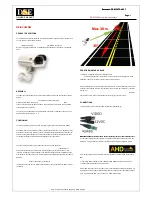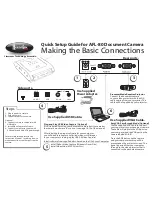
Falcon 1.4M100 Camera Manual
44
4.9
Flat Field Correction
This camera has the ability to calculate correction coefficients in order to remove non-
uniformity in the image. This video correction operates on a pixel-by-pixel basis and
implements a two point correction for each pixel. This correction can reduce or eliminate
image distortion caused by the following factors:
•
Fixed Pattern Noise (FPN)
•
Photo Response Non Uniformity (PRNU)
•
Lens and light source non-uniformity
The camera is shipped with pre-set factory correction coefficients in both the factory and
user sets, such that in most applications there is no need to perform flat field correction.
Note that factory calibration is performed with an exposure time of 9ms. However, if you
are using a different exposure time and your application is sensitive to small pixel
variations, it is recommended that you perform flat field correction at your typical
exposure time.
Correction is implemented such that for each pixel:
V
output
=[(V
input
- FPN( pixel ) - digital offset) * PRNU(pixel) – Background Subtract] x System Gain
where
V
output
=
digital output pixel value
V
input
=
digital input pixel value from the sensor
PRNU( pixel)
=
PRNU correction coefficient for this pixel
FPN( pixel )
=
FPN correction coefficient for this pixel
Background Subtract
=
background subtract value
System Gain
=
digital gain value
The algorithm is performed in two steps. The fixed offset (FPN) is determined first by
performing a calculation without any light. This calibration determines exactly how much
offset to subtract per pixel in order to obtain flat output when the sensor is not exposed.
The white light (PRNU) calibration is performed next to determine the multiplication
factors required to bring each pixel to the required value (target) for flat, white output.
Video output is set slightly above the brightest pixel (depending on offset subtracted).
It is important to do the FPN correction first. Results of the FPN correction are used in the
PRNU procedure. We recommend that you repeat the correction when a temperature
change greater than 10°C occurs or if you change the frame rate or integration time.
Note:
If your
illumination or
white reference
does not extend
the full field of view
of the camera, the
camera will send a
warning.
PRNU correction requires a clean, white reference. The quality of this reference is
important for proper calibration. White paper is often not sufficient because the grain in
the white paper will distort the correction. White plastic or white ceramic will lead to
better balancing.
03-032-20024-01
DALSA
















































